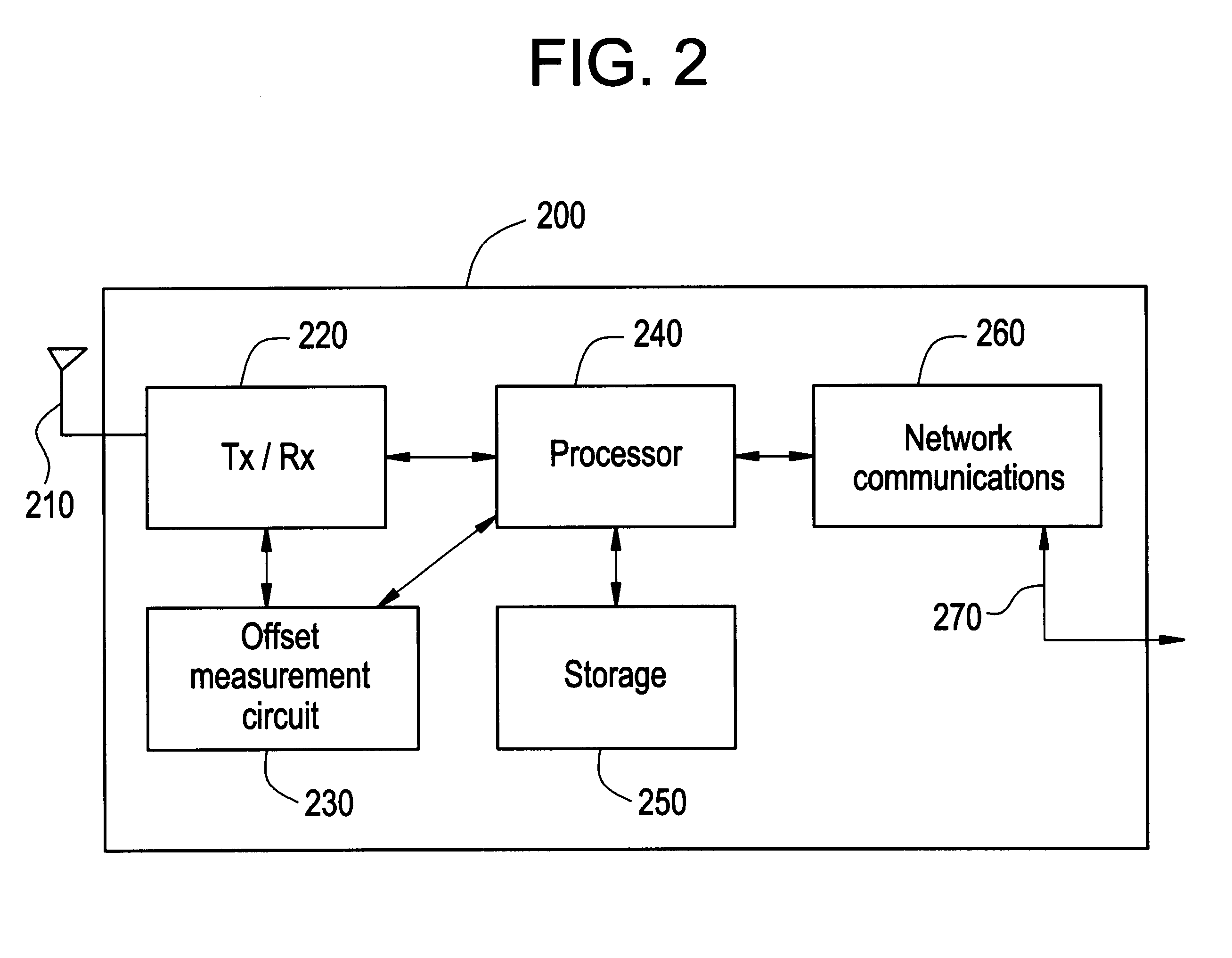Methods and devices for asynchronous operation of a CDMA mobile communication system
- Summary
- Abstract
- Description
- Claims
- Application Information
AI Technical Summary
Benefits of technology
Problems solved by technology
Method used
Image
Examples
Embodiment Construction
Reference is made first to FIG. 1, which illustrates an exemplary asynchronous CDMA mobile communication system in accordance with the invention. As seen in FIG. 1, asynchronous base transceiver stations 110, 112 are connected by communication links 114, 116 to a communications network 100 that includes base station controllers, switches and further communication links (not individually illustrated). Each BTS 110, 112 provides coverage over geographic ranges that are represented in FIG. 1 in an idealize fashion by respective ovals 118, 120. Of course, in real deployments the range of coverage provided by base stations varies widely in accordance with many environmental and device-related factors. As further shown in FIG. 1, the areas of coverage 118, 120 include an overlap region 122. Accordingly, a receiving device in the area of overlap such as mobile receiving device 130 will be able to receive signals from both base transceiver stations, and may be subject to the effects from co...
PUM
 Login to View More
Login to View More Abstract
Description
Claims
Application Information
 Login to View More
Login to View More - R&D
- Intellectual Property
- Life Sciences
- Materials
- Tech Scout
- Unparalleled Data Quality
- Higher Quality Content
- 60% Fewer Hallucinations
Browse by: Latest US Patents, China's latest patents, Technical Efficacy Thesaurus, Application Domain, Technology Topic, Popular Technical Reports.
© 2025 PatSnap. All rights reserved.Legal|Privacy policy|Modern Slavery Act Transparency Statement|Sitemap|About US| Contact US: help@patsnap.com



